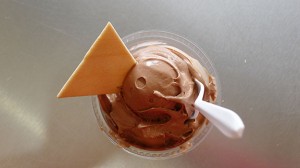Virginia woman is changing people’s perceptions about parents with disabilities.
By Anna Medaris Miller
The way Shelby Nicholas describes her mom is the way most typical teens describe theirs: “She’s crazy,” says Nicholas, a 16-year old in the Prince William County School System who prefers to say she is “going on 17.”
Nicholas’s mom shuttles her to and from school and the movies, badgers her about her homework and teases her about her adoration of the Washington Nationals’ Bryce Harper. On this Monday night, Nicholas is grudgingly working to boost her geometry grade. If she doesn’t, the family outing to the baseball game is on the line, her mom warns.
Nicholas rolls her eyes. Life goes on in their Woodbridge, Va., condo much like it does in the homes of teenagers around the country.
Except one thing is different: Nicholas’s mom is in a wheelchair. Diagnosed with a progressive neuromuscular disease called Charcot-Marie-Tooth as an infant, Amy Nicholas, 50, has lost control of her fingers, wrists and legs. She uses a power wheelchair to get around, a wrist grip on the steering wheel to drive and various gadgets including an electric can opener to deal with daily annoyances. She’s also gotten creative with her teeth.
“Along the way, with each loss of some function or another, I’m just constantly trying to replace it with some…device that will take its place,” says Amy Nicholas, who also has a 14-year-old son, Luke. She and her children’s father, who lives in Indiana, divorced five years ago.
According to the National Council on Disability, Amy Nicholas is one of more than 4.1 million parents with disabilities in the United States. And while that number is growing — veterans returning home from Iraq and Afghanistan with injuries, for example — support for them is falling behind: In a 2012 report, the council found that parents with disabilities often have trouble accessing reproductive health care, face discriminatory treatment in child custody and adoption cases, and regularly confront other barriers related to being a parent.
“We know it’s happening and it’s happening a lot,” says Robyn Powell, an attorney advisor at NCD. “Ultimately, more and more people with disabilities are going to choose to be parents [and that’s] something we should support.”
‘Out of my grasp’
Amy Nicholas didn’t always imagine herself as a mother. In fact, she never even thought she’d get married. “It just seemed as something that was out of my grasp,” she says.
And no one tried to convince her otherwise: Her neurologist told her never to have children and her grandmother told her to “leave that to someone else,” she remembers.
But after marrying her former husband in 1985, she began caring for her neighbors’ young children. “When they trusted me to be able to take care of their children and I had the confidence that I could, then I realized that yeah, I do want to be a mom,” she says.
Since then, Amy Nicholas has raised Shelby and Luke — and in the last several years, largely by herself.
“The misperception that a person with a disability is not as capable of caring for a child or doing what an able bodied person can needs to cease — and that can be done legislatively,” she says.
For example, two-thirds of child welfare laws allow discrimination based on disabilities, according to Powell. Some states have statutes that include disability as grounds for termination of parental rights. As a result, parents with disabilities are more often referred to child welfare services and permanently separated from their children at disproportionately high rates, the NCD report found. Adoption and assisted reproductive technology services are also often denied to parents with disabilities, accessible housing is rarely made for families and public transportation can be a nightmare.
“We are 23 years past the Americans with Disabilities Act and this is one of the last areas where people with disabilities are legally allowed to be discriminated against,” says Powell. “We need to be looking at this.”
In the public eye
Amy Nicholas was inspired to go to law school after a car rental company refused her request for a car equipped for people with disabilities. These are the types of things she doesn’t stand for. But it wasn’t until a friend suggested she go to law school that she considered making a career out of it. She graduated from the Robert H. McKinney School of Law in 2012 and is currently looking for a job.
But Amy Nicholas still hesitates to call herself an activist.
“I mean I’m out there, I’m in the public eye, I do everything that an able-bodied person does,” she says. “So I guess if you want to call that an advocate of being out there and not shying away from things that may be difficult.”
Not only has Amy Nicholas not shied away from the big things such as parenting and the little things such as doing the laundry, she also hasn’t shied away from the things that most people — with a disability or without — would. According to Shelby and Luke Nicholas, their mom has gone skydiving, bull riding and white water rafting, too.
“Most people look at her and feel sorry for her, but there’s no reason to feel sorry for her,” Shelby Nicholas says. “She’s used to being in a wheelchair — she’s been in one and out of one her whole life. It doesn’t keep her from doing what she wants to get done.”

